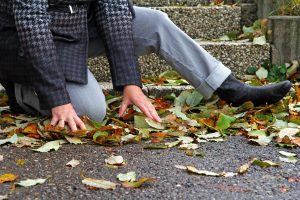
As autumn settles in, daylight hours noticeably decrease. With the arrival of shorter days and longer nights, the risk of personal injuries can increase, particularly due to reduced visibility and changes in daily routines. Understanding how these seasonal changes impact safety and implementing strategies to mitigate these risks is crucial for staying safe. If you become injured during this time, an experienced personal injury attorney like Andrew Maze can help.
Understanding the Impact of Reduced Daylight
As the days grow shorter, many people find themselves commuting or participating in outdoor activities during hours of diminished natural light. This reduction in daylight can lead to several key safety concerns:
- Decreased Visibility: One of the most significant impacts of shorter days is the reduction in visibility. Dusk and early evening hours, when daylight is fading, can create challenging conditions for drivers, pedestrians, and cyclists. Reduced visibility increases the likelihood of accidents, such as collisions and falls.
- Driver Fatigue: The transition to shorter days can also affect drivers’ circadian rhythms, leading to increased fatigue. Drivers who are not fully alert are more prone to making errors, such as failing to notice pedestrians or misjudging distances, which can result in accidents.
- Rushing During Daylight Hours: The shift in daylight hours often leads to changes in daily routines. People may rush to complete tasks before dark or adjust their schedules to accommodate earlier darkness. These changes can lead to hurried actions and reduced attention to safety, increasing the risk of accidents.
- Increased Risk of Slip and Fall Accidents: The autumn season often brings wet and slippery conditions due to rain, dew, and fallen leaves. Combined with reduced daylight, these conditions can make sidewalks and driveways more hazardous, leading to a higher risk of slip and fall accidents.
Safety Tips to Mitigate Risks
To stay safe as daylight hours decrease, consider the following tips:
- Increase Visibility: For drivers, ensuring that your vehicle’s headlights, taillights, and turn signals are functioning properly is crucial. Use headlights during dusk and early evening hours to improve visibility and make yourself more noticeable to other road users. Pedestrians and cyclists should wear reflective clothing or accessories to increase their visibility to drivers.
- Adjust Driving Habits: With reduced daylight, it’s important to adjust your driving habits. Slow down and increase your following distance to allow more time to react to potential hazards. Be particularly cautious at intersections and crosswalks, where visibility can be limited. If you’re feeling tired or drowsy, avoid driving and consider finding alternative transportation.
- Maintain Outdoor Areas: Regularly clean and maintain outdoor areas to prevent slip and fall accidents. Remove fallen leaves from sidewalks, driveways, and stairs, and address any areas prone to accumulating water or ice. Proper lighting around walkways and entryways can also help reduce the risk of accidents.
- Plan Ahead: To minimize the impact of shorter days on your routine, plan your activities to occur during daylight hours whenever possible. If you need to be out after dark, ensure that you are well-prepared with appropriate clothing, gear, and lighting.
- Stay Alert and Avoid Distractions: Whether you’re driving, walking, or cycling, staying alert and avoiding distractions is key to maintaining safety. Keep your focus on your surroundings and avoid using your phone or engaging in other distractions that could compromise your attention.
- Educate and Communicate: Share safety tips with family members, particularly children and elderly individuals, who may be more vulnerable to accidents. Educate them about the risks associated with shorter days and encourage them to take necessary precautions.
If You Are Injured
If you find yourself injured due to an accident during these shorter days, it’s important to take immediate steps to protect your rights and ensure proper compensation. First, seek medical attention to address any injuries and to document your condition, which is crucial for any future claims. Once you’re safe, consider consulting a personal injury attorney, like Andrew Maze, who can guide you through the legal process. An experienced attorney can help you understand your options, gather evidence, negotiate with insurance companies, and, if necessary, represent you in court. By securing legal representation early, you can focus on your recovery while your attorney works to protect your interests and pursue the compensation you deserve.
Staying Safe as Daylight Shortens: Reducing Injury
The transition to shorter days during autumn presents unique safety challenges that can increase personal injury risks. By understanding the impact of reduced daylight on visibility and adopting proactive safety measures, you can significantly reduce the likelihood of accidents. Enhanced visibility, cautious driving habits, regular maintenance of outdoor areas, and staying alert are essential strategies for staying safe as daylight hours decrease. Embracing these practices will help you navigate the autumn season with greater confidence and security.